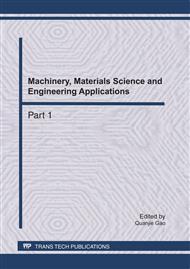p.496
p.500
p.505
p.509
p.514
p.519
p.526
p.532
p.537
Enhanced Performance of ZnO-Coated LiNi0.5Mn1.5 O4 Cathode Materials for Li-Ion Battery
Abstract:
ZnO-coated LiNi0.5Mn1.5O4 cathode materials for Li-ion batteries have been synthesized. Samples were characterized by scanning electron microscopy (SEM), X-ray diffractometry (XRD) and charge-discharge tests. The results of XRD and scanning electron microscopy (SEM) showed the ZnO-coating was nano-sized, and the LiNi0.5Mn1.5O4 powder exhibits a typical cubic spinel structure with a space group of Fd3m. Electrochemical tests demonstrate that the ZnO-coated sample obtained possesses high capacity and excellent cycling stability compared with the as-prepared LiNi0.5Mn1.5O4. When being discharged at a rate of 1C after 50 cycles, the ZnO-coated LiNi0.5Mn1.5O4 powders can still deliver a capacity of 115.5 mAh•g-1, with nearly no capacity fading, which shows to be a potential cathode material for high-energy density power batteries.
Info:
Periodical:
Pages:
514-518
Citation:
Online since:
April 2011
Authors:
Price:
Сopyright:
© 2011 Trans Tech Publications Ltd. All Rights Reserved
Share:
Citation:


